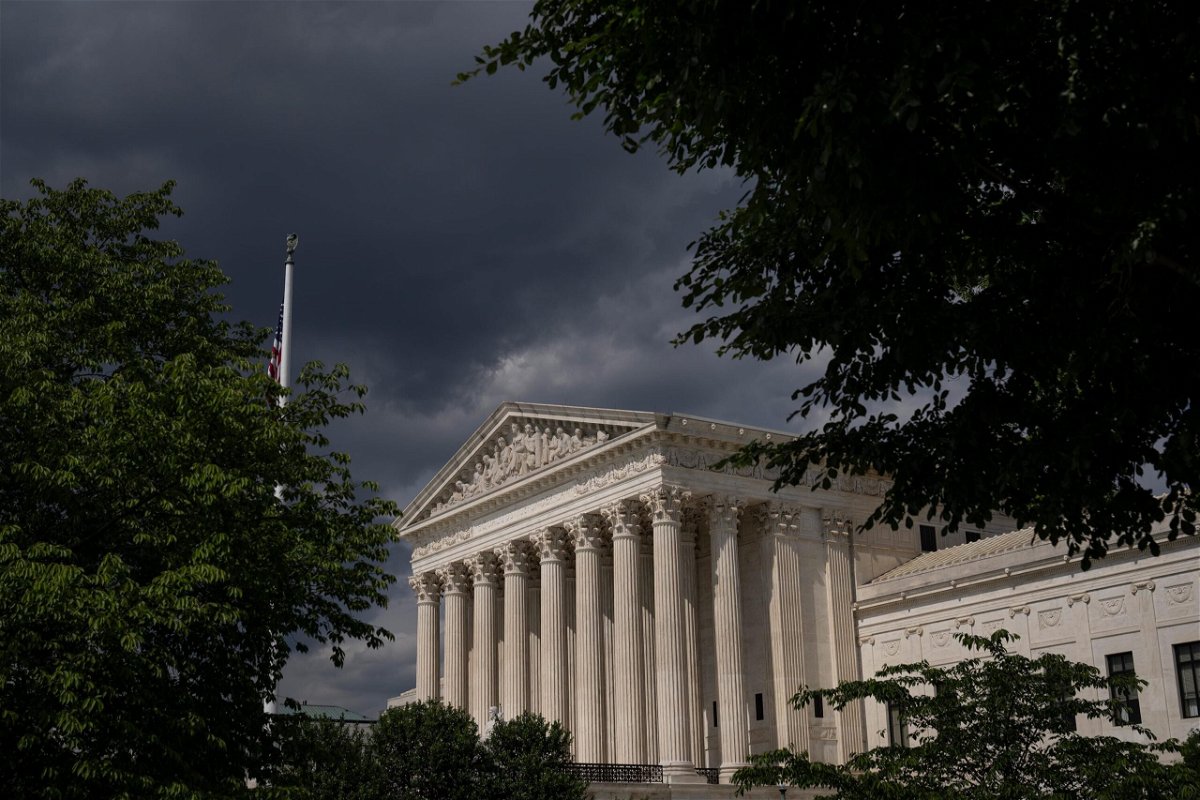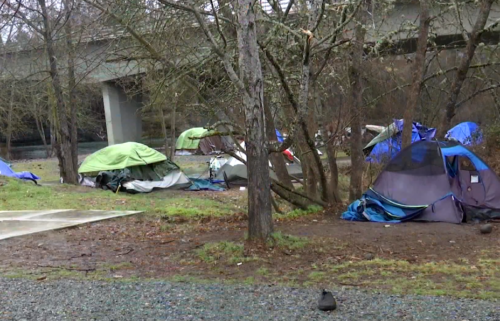Supreme Court conservatives may have their chance to end affirmative action at universities

The conservative Supreme Court
By Joan Biskupic, CNN legal analyst & Supreme Court biographer
The conservative Supreme Court led by Chief Justice John Roberts has long wanted to diminish racial remedies in American life and may now be headed toward a far-reaching decision on university affirmative action.
The court is likely to decide in upcoming weeks whether to hear a challenge to Harvard’s admission practices, which critics claim unlawfully consider students’ race, benefitting Blacks and Hispanics, but disadvantaging Asian American applicants.
The Department of Justice late Wednesday urged the Supreme Court to reject the case against Harvard. The filing from the office of US Solicitor General Elizabeth Prelogar emphasized that lower US courts had extensively reviewed Harvard’s racial admissions practices and found them sufficiently limited to meet Supreme Court precedent as they furthered the school’s interest in campus diversity.
Admissions practices that take account of students’ race, first upheld in a 1978 Supreme Court decision and reaffirmed in 2003, have boosted the admission of Black and Latino students for decades. Proponents argue such diversity enhances campus life and the educational mission.
The policies have remained controversial over the years, however, and the high court has heard a series of lawsuits brought by opponents who consider any race-based screening unlawful discrimination. In past decades, racial affirmative action was narrowly upheld, in cases by one-vote margins.
But justices such as Sandra Day O’Connor and other centrist-conservatives have been succeeded by a new generation of more conservative Republican appointees. The writings of several justices in today’s conservative majority suggest they would be ready to take up the racially charged dispute and possibly change the look of college enrollment across the country.
The court had postponed its consideration of the Harvard case while it waited for the views of the US Solicitor General’s office. The nine justices are now likely to meet sometime in January on whether to accept the challenge, brought by the Students for Fair Admissions group.
The justices already have a calendar heavy on culture-war issues, including abortion rights, gun control and the separation of church and state. Based on arguments in these cases, Americans may be headed for a sea change in individual rights and civil liberties.
With such major cases on their agenda and only a few more weeks left for the scheduling of this spring’s oral arguments, the justices, if they accept the case against Harvard, might hold off on oral arguments until October 2022, when the next court session begins.
Dramatic change in court’s makeup
Students for Fair Admissions contends Harvard engages in “racial balancing” in its admissions practices. In the case dating to 2014, it argues the Ivy League campus holds Asian Americans to a higher standard and limits their numbers, in violation of Title VI of the 1964 Civil Rights Act, which forbids schools that receive federal funds from discriminating based on race.
Since the lawsuit began seven years ago, the composition of the Supreme Court has changed in a way to benefit opponents of affirmative action, with three new appointees of former President Donald Trump. The court last upheld affirmative action in 2016, in a dispute over the University of Texas at Austin.
The Harvard lawsuit was engineered by a conservative activist, Edward Blum, who successfully brought the racial challenge that led to the 2013 landmark Shelby County v. Holder rolling back a major provision of the Voting Rights Act.
From the beginning, Blum and the conservative advocates who have joined him have aimed for high court reversal of Supreme Court rulings from 2003 (Grutter v. Bollinger) and 1978 (Regents of the University of California v. Bakke) permitting race to be one of many factors in selecting students for a place on campus.
When the Supreme Court in 2003 reaffirmed Bakke, now-retired Justice O’Connor emphasized a university’s mission to train future leaders and wrote, “Effective participation by members of all racial and ethnic groups in the civic life of our Nation is essential if the dream of one nation, indivisible, is to be realized.”
But the court has changed dramatically since then. Roberts has written, “It is a sordid business, this divvying us up by race,” and, “The way to stop discrimination on the basis of race is to stop discriminating on the basis of race.”
Two of the justices in the majority that upheld racial admissions the last time such a case was heard, in 2016, were Anthony Kennedy and Ruth Bader Ginsburg, who have been succeeded by Brett Kavanaugh and Amy Coney Barrett, respectively.
The court was down to seven justices for that 2016 Texas controversy. Justice Antonin Scalia had just died, and Justice Elena Kagan recused herself because of involvement in the dispute before becoming a justice.
Dissenting from the 4-3 decision upholding the state university’s racial criteria were Roberts and Justices Clarence Thomas and Samuel Alito.
Thomas, whose influence has grown in recent years with the new Trump appointees, wrote a separate dissenting statement underscoring his opposition to any state use of race in higher education admissions.
“The Constitution abhors classifications based on race because every time the government places citizens on racial registers and makes race relevant to the provision of burdens or benefits, it demeans us all,” Thomas wrote. “That constitutional imperative does not change in the face of a ‘faddish theory’ that racial discrimination may produce ‘educational benefits.’ The Court was wrong to hold otherwise in Grutter v. Bollinger.”
Harvard’s admissions rules
Harvard, which has urged the justices to reject the new appeal, counters that it sets no numbers for students tied to racial criteria and that all applicants are considered individually based on many characteristics.
A US district court judge ruled in 2019 against SFFA after a three-week trial a year earlier. The 1st US Circuit Court of Appeals last year affirmed the decision, finding that Harvard’s practices were lawful under Supreme Court precedent and did not discriminate against Asian American students.
Students for Fair Admissions has also sued the University of North Carolina over its admissions practices. That case, which SFFA lost at trial, has not yet been heard by a US appeals court. But SFFA has urged the justices to hear the case, even without an appellate judgment, along with the Harvard controversy now pending. (The lawsuit against the state university raises a Title VI claim, as well as one under the 14th Amendment’s guarantee of equal protection of the laws.)
In its filing on Wednesday, the Justice Department highlighted the decades-long reliance of public and private universities across the country on affirmative action, since the 1978 Bakke decision, and the disruption that would flow from reconsideration of precedent.
The Justice Department urged the court to spurn the challengers’ request to reconsider the last major high-court endorsement of affirmative action, in the 2003 University of Michigan case known as Grutter v. Bollinger.
Referring to the tradition of adhering to precedent, known as stare decisis, Prelogar wrote, “In the view of the United States, Grutter’s interpretation of equal-protection principles is correct, and all traditional stare decisis factors — including the substantial reliance interests of colleges and universities around the Nation — strongly support adhering to Grutter.”
The Biden administration filing contrasts with the Trump administration position, which had backed the challengers to Harvard in an earlier stage of the long-running litigation.
Harvard’s lawyers, in urging the justices to let its lower court victories stand, noted that no split in the larger legal issue exists among US appellate courts, which is usually what prompts the Supreme Court to hear and issue and clarify the law.
Harvard contends it considers race “only in a flexible and nonmechanical way” and that such consideration “benefits only highly qualified candidates.”
SFFA’s challenge was filed by the Consovoy McCarthy law firm, which is led by lawyers who were law clerks to Thomas and other conservative jurists and which represented Trump in some litigation during his tenure.
It argues that high court decisions allowing race to be a “plus” in screening have become “a minus for Asian Americans.” The say Asian American applicants were penalized in a process that rated them as “book smart and one-dimensional.” Lower court judges rejected the claim as they ruled that Harvard does not unlawfully discriminate.
Blum, a longtime opponent of racial policies, previously enlisted White students to challenge affirmative action policies, as he did in the University of Texas case. (White student Abigail Fisher lost that case.)
In the Harvard dispute, there are no individual Asian American plaintiffs named. Asian American advocates divided in their response to the lawsuit in the earlier phases of the litigation, some supporting, others opposing. The community is itself diverse, tracing its heritage to different countries and experiencing dissimilar social and economic prospects in the US.
The-CNN-Wire
™ & © 2021 Cable News Network, Inc., a WarnerMedia Company. All rights reserved.



